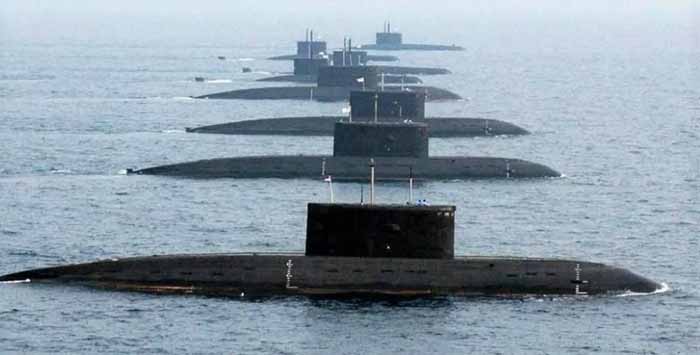
bdmetronews Desk ॥ Russia is expanding its naval presence in the Eastern Mediterranean because it’s easier than trying to, compete with the United States on the world’s oceans, according to Dmitry Gorenburg, an expert on the Russian military, in an analysis for the George C. Marshall European Center for Security Studies.
“Maintaining naval presence in the Mediterranean is a far more effective strategy for the Russian Navy than pursuing a globally active blue-water navy because Russia has neither the resources nor the global ambitions to challenge U.S. naval supremacy around the world,” writes Gorenburg. “Moscow’s focus on developing and augmenting the Mediterranean squadron is thus a far more achievable limited objective that is well-aligned with Russia’s foreign policy objectives in the region.”
During the Cold War, Soviet warships were a familiar sight in the Mediterranean. The Fifth Eskadra, the Soviet Mediterranean squadron established in 1967, would tail U.S. aircraft carriers, ready to strike them with missiles, torpedoes and even nuclear weapons in the event of war. But with the collapse of the Soviet Union, the squadron was disbanded in 1992.
It was resurrected in 2013 as the Mediterranean Squadron, drawn primarily from the ships of the Black Sea Fleet, which itself has been equipped with several new submarines and surface ships. Meanwhile, the Syrian port of Tartus – a Cold War pit stop for the Fifth Eskadra – has again become a Russian base for servicing warships, including nuclear-powered vessels.
“Since the addition of six Varshavyanka-class submarines to the BSF in 2017, Russia has stationed two such vessels in Tartus, Syria,” Gorenburg writes. “Surface ships and submarines from Russia’s other fleets, mainly the Northern and Baltic, have participated in squadron operations at various times as well. The force has actively contributed to Russia’s military operations in Syria. In addition to delivering troops, BSF [Black Sea Fleet] vessels have fired Kalibr missiles at ground targets throughout Syria. Russian ships have also shadowed U.S. ships in the eastern Mediterranean, and Russian submarines deployed to the Mediterranean have tracked U.S. and NATO platforms there as well. The squadron has also facilitated Russian naval diplomacy efforts, as ships from the squadron have called at ports at Cyprus, Egypt, and Malta.”
In addition, Russian aircraft operate from Syrian bases, as well as a variety of missile systems, including S-400 and S-300 long-range and Pantsir short-range anti-aircraft missiles, as well as K-300 Bastian and Kh-35 coastal defense anti-ship missiles. A permanent force in the Mediterranean enhances Russian prestige in the region, deters Western military operations in the areas, and provides security against the Mediterranean as a base for hostile forces to strike the Russian homeland.






